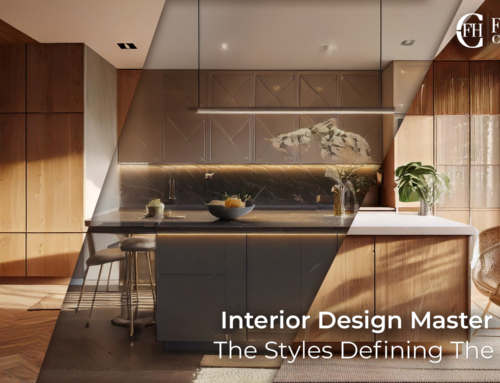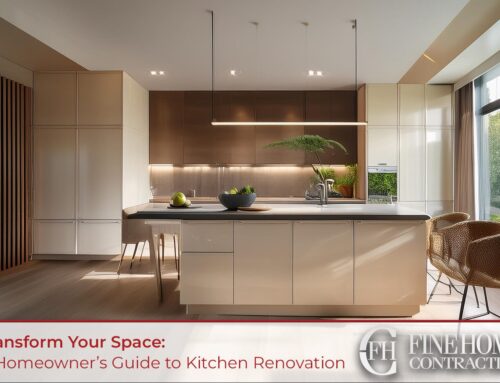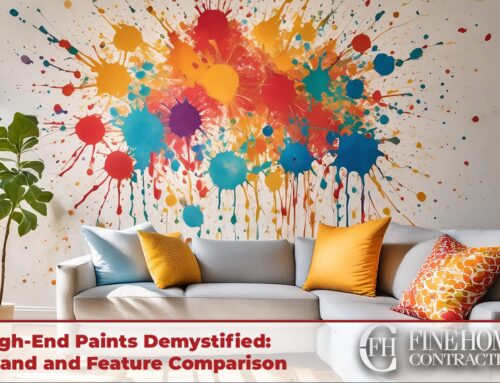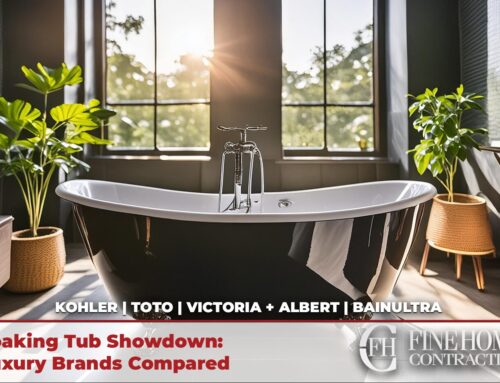In the competitive world of interior design, effective marketing and networking are both essential for success. Developing a network of referral partners, vendors, contractors, lenders, and other industry professionals does more than give you recommendations for clients: Being a part of a thriving business network is a great way to find leads, receive referrals, and keep your business operating smoothly and bringing in money.
Marketing your skills as a designer goes beyond having an impressive portfolio or defined aesthetic: Designers face the challenge of selling an experience tailored to their clients’ lifestyles, not just a product. Effective marketing, crafting compelling narratives and visuals for your brand is vital to establishing a distinct presence both online and in your local industry networks.
In this article we’ll explore the foundations of developing an online and physical presence for your design business, give tips about lead and referral sources, and give you the tools you need to start a design empire.
Social Media Marketing for Interior Designers
Social media has emerged as a powerhouse for interior designers to showcase their creativity and connect with a broader audience. Services like Facebook, Instagram, and other social networks are great tools for expanding your audience through reach campaigns, bolstering your sales by posting lead ads, and building your local network through community group pages, town pages, and industry-focused networking facebook groups. In this section, we explore key strategies for leveraging social media effectively, from choosing the right platforms to creating engaging content that captivates potential clients.
The most dominant social networks with the largest userbases tend to be the most wide-reaching for marketing, and it’s best to start by ensuring you have a complete profile on each of these large sites. Additionally, linking all of these pages together by adding your other social accounts and website helps to ensure clients are able to find your presence across multiple networks.
Facebook, Instagram, and Tiktok tend to be managed very similar by marketers, and all three benefit from short-form content such as informative video shorts, educational reels, and content with entertainment value. Posting to each of these networks daily gives your content a higher chance of reaching large audiences.
In addition to content-focused marketing, these sites also offer advertising. Most ad costs are based on a set fee per click, and ensure you have a thorough understanding of how much traffic you are purchasing. While these campaigns may seem like a tempting source of easy traffic, it’s important to cater and filter your advertising to leads that are likely to convert, such as new homeowners and movers. Unfortunately, the more targeted your ad audience, the higher your ad cost tends to be.
Creating Engaging Visual Content
Interior design is inherently visual, making the creation of compelling content a top priority. Viewing each project as a narrative is one approach to videos: List out the problems your client faced, the measures you took to resolve them, and the end result. Likewise informational content such as Design Tips videos appeal to a wide audience, and create a sense of authority for your personal brand. Your goal when creating content is to be memorable and establish a distinct brand identity, so don’t be afraid to get creative with your content!
Leveraging Hashtags and Trends
Staying current with design trends and harnessing the power of hashtags can significantly boost the visibility of an interior designer’s content. Keep track of trending hashtags and google search phrases, and try to create content that focuses in on those issues to keep topical and increase your view count.
Collaborative Content
As a designer, having a network of industry partners you trust is one of the strongest assets you can retain. Collaborating with other designers, contractors, realtors, lenders, property managers, and similar industry professionals is a great way to boost both your brands. Consider podcasts, videos, and events that can be collaboratively managed by companies whose target clientele and branding are similar to yours, but not competitive.
Online Listing Management
Your visibility online relies heavily on being present on every platform, map service, and listing system. A compelling online presence is more than a digital portfolio—it’s a testament to a designer’s credibility and expertise. In this section, we’ll explore the most critical places to list your design business online for maximum exposure and reach.
Managing Reviews and Testimonials
In the digital age, client reviews and testimonials play a pivotal role in shaping a designer’s reputation. Encouraging your satisfied clients to leave positive reviews is vital to developing your brand’s persona and reputation. Designers can request feedback from clients upon project completion, prompting them to share their thoughts on platforms such as Google, Yelp, or specialized interior design directories. Utilizing social media channels to showcase client testimonials also adds a personal touch, allowing potential clients to see real-life examples of successful collaborations.
Equally important is the adept handling of negative feedback. Instead of viewing negative reviews as setbacks, designers can approach them as opportunities for improvement. This involves responding promptly and professionally to address concerns, demonstrating a commitment to client satisfaction. Acknowledging feedback, whether positive or negative, reinforces transparency and authenticity, key elements in building trust with potential clients.
Content Blogging for Interior Designers
Content blogging is a potent tool for interior designers to not only showcase their portfolio but also engage with a wider audience, establish authority in their niche, and enhance their online presence. In this section, we explore the key elements of an effective content blogging strategy, from the foundational steps of establishing a website and blog to the intricacies of SEO and the significance of backlinks in boosting online visibility.
Direct Mail Advertising for Interior Designers
Networking Groups for Interior Designers
Networking is a cornerstone of success for interior designers, facilitating connections, skill development, and business opportunities. One of the most effective ways for interior designers to enhance their professional network is by joining industry-specific associations. While these vary from state-to-state, the IDS and ASID are great places to start. Other worthwhile options include local business groups such as BNIs, and local realtor lunch and learns to potentially be referred new homebuyers.
Participation in industry events and conferences offers interior designers invaluable opportunities to expand their network, gain insights, and stay at the forefront of design trends. A prime example is the High Point Market, the largest furnishings industry trade show in the world, where designers can connect with manufacturers, retailers, and fellow designers. Another notable event is the International Contemporary Furniture Fair (ICFF), a platform that brings together global design professionals to showcase and explore the latest innovations in contemporary design. Conferences like the Interior Design Society (IDS) National Conference provide a forum for designers to engage in educational sessions, network with industry leaders, and participate in panel discussions.
Finding Leads and Business as an Interior Designer
To recap the above: Your lead sources should be diversified to ensure consistent business. Invest your time wisely between building a referral network, an online presence with content marketing, and a list of local events and conferences. These are long-term investments that often take time to pay off before you see your first lead.
Finding immediate leads is a different story: While it isn’t impossible to find a lead for a client as soon as same day, working on a limited timescale often means you pay more for less qualified leads. If you’re willing to spend a bit more money on finding customers, and have high enough profit margins to manage it, that’s where lead-buying sites like Angi, Thumbtack, and Houzz start to shine.
Partner with Contractors for Consistent Work
Establishing strategic partnerships with contractors can be a game-changer for interior designers, providing a pathway to consistent work and fostering a mutually beneficial relationship. Having a go-to contractor offers designers the benefit of a reliable collaborator who understands their design preferences and working style, as well as easier communication and more familiarity.
On top of having a contractor you can trust for any clients looking for an addition or remodel, partnering with a contractor can be a great way to create a lead exchange: Oftentimes the same client will need a contractor and designer simultaneously, and partnerships like this give independents designers a step up against larger contracting companies with an in-house designer.
In this masterclass, we’ve equipped you with an arsenal of marketing strategies designed to propel your interior design career to new heights. From social media to online listings, each section is one small part of the multi-faceted online presence you need to grow your brand. As you embark on implementing these strategies, keep in mind that marketing is a consistently changing industry: You’re not merely navigating trends; you’re shaping them. The journey to effective marketing can be a slow climb, but with some consistency and these tools, your brand is sure to expand.







